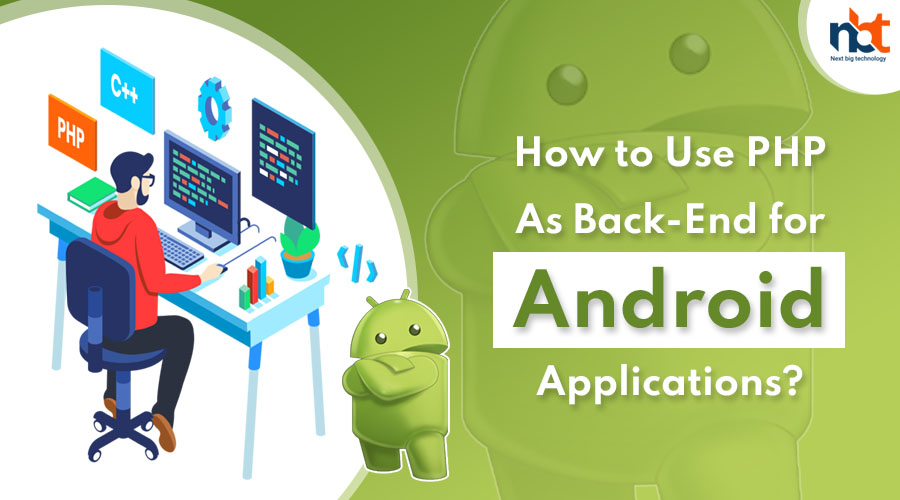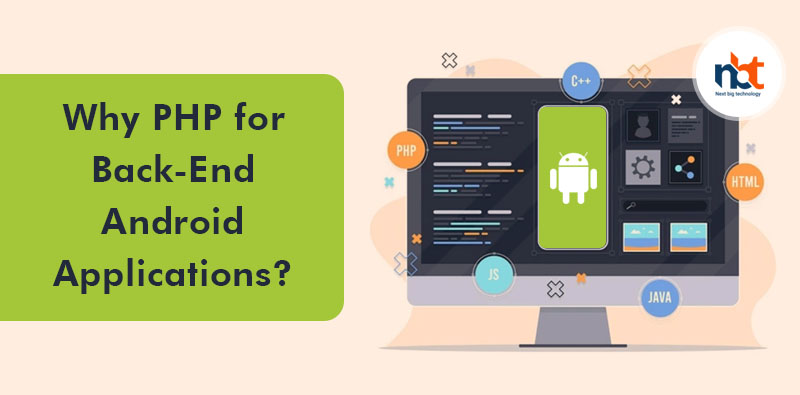PHP is an incredible programming language for use as a backend for Android applications. It requires Android login and enlistment, the two of which are incredibly normal and vital situations.
All applications that wish to gather client data will without a doubt incorporate enlistment and login usefulness. In this segment, we’ll check out how PHP can be utilized as the backend for Android applications and how to set up a nearby server and MySQL data set to help with PHP web development company.
Basically, we will make an enrollment and login application. The PHP content will be utilized to set up an association with the MySQL data set. Now, let’s understand what is how and how it can be used as back-end for android applications as mentioned by the top mobile app developers.
Table of Contents
What is PHP?
PHP is an open-source web and mobile development system used to plan rich and adaptable web and mobile application development. It is additionally perhaps the most financially savvy mobile development framework. Combined with its lightweight design, the expense adequacy of its organization makes it ideal for low-spending plan Android application development.
As per the top mobile app development company experts, the development of an exquisite back-end for Android of mobile applications using PHP likewise relies upon how well a developer is familiar with the basics like REST and APIs. Representational State Transfer is a convention that works with correspondence between a server and the mobile application, while the API (Application Programming Interface) is a bunch of rules for the sending of contributions from web tools or an information base, and it comes in the Software Development Kit (SDK).
Also read: A Guide to Create an Amazing Android Application
Why PHP for Back-End Android Applications?
Fundamentally, the modalities for an effective sending of PHP as the back-finish of an Android application development rotate around utilizing PHP to deal with the important web demands on an unmistakable center layer.
For this situation, PHP processes client verification and meeting the board, while the solicitations from outsider customers are then handled by Java-based help. Thus, the API can block approval, validation, and meeting of the executives, totally zeroing in on REST.
How to Set Up PHP?
In the light of the short introduction above on utilizing PHP to make an Android application backend, we will continue to diagram the fundamentals.
Essential Setups
The main thing that should be done is to decide the fundamental envelope construction of the PHP. For straightforwardness, it’s ideal to make numerous particular records in PHP.
For example, every one of the worldwide constants for the specific application ought to be dispatched uniquely to api.php. That is to say that a specific API key and its objective endpoint URL should be contained in API_URL.php.
Later these unmistakable documents have been effectively made, they should be remembered for the bootstrap. PHP which is found in the config organizer; the bootstrap assumes a conclusive part in each solicitation cycle. Essentially, all constants and their objective URLs will be tracked down all around the application
The Routing Process
Later the setups are appropriately executed, the following significant advance is to deal with every one of the URLs by making them in routes.php. This is additionally found in the config organizer. This improves the potential outcomes of determining the URLs and guiding them to the suitable regulators easily.
One curious benefit of doing this is that the APIs are effectively protected from the impact of the URLs which are totally relegated with more prominent accuracy to the application’s front end. This is a sensitive interaction that PHP development benefits twofold down on.
Also read : Features to develop the right Android applications
Regulators & Their Action Indexes
The subsequent stage is to execute a few activities on the regulator interface. Make a regulator and appoint the name ArticlesController to it. Subsequent to name it, you’ll be needed to characterize its activity file. Likewise, you are needed to call the model technique which is named “getArticles”. This move puts out a call to the comparing API and gets a suitable reaction.
Subsequently, a capacity called “checkAPIResponse”, which is characterized in the AppController. Note that you should abstain from making changes to the app.php of the specific information base association arrangement. This is on the grounds that the API is the main applicable information source here and not the data set.
Making Models
The following essential advance is to make a CustomTable.php model named “ArticlesTable.PHP” in the model/table organizer. Nonetheless, preceding doing this, a CustomTable.php is needed to be made. Basically, these capacities incorporate the GET, DELETE, POST, and PUT. Consequently, they will be relevant to the models which will complete the occupation of broadening it.
To execute this piece of the arrangement, visit the model/table organizer structure, make the Articles.php, and afterward input the getArticles work which was called before on in the ArticlesController.php.
Wrapping Up…
That is essentially everything to utilizing PHP as a back-end for Android application development. As prior expressed, this structure is favored on the grounds that it works with the simple partition of the constituent conventions including logging and the board of meetings and keeps the API ideally smoothed out.
Likewise, by sending PHP in web application development and facilitating the mobile application’s backend on Google App Engine, a designer can zero in on utilizing the functionalities of the cloud application without getting occupied.
In spite of its relative effortlessness, the utilization of PHP for the development of a vigorous backend for an Android application might require sales for PHP development benefits because of a portion of its innate downsides.
By introducing an extra layer between the customer and the server, PHP consequently makes an overhead. In any case, the top PHP web development services providers utilize tweaked capacities to manage such complexities. A PHP development organization, such as NBT, applies an extensive way to deal with each part of the interaction and bridles them ideally with the end goal of the application.
An Amazing thought merits an elite development organization like Dedicated Developers, where you will find top-of-the-line innovation, tech-master developers, and development quality. For more data on our PHP development Services, mail us. We are there to serve you round-the-clock.
Thanks for reading our post “How to Use PHP As Back-End for Android Applications?”, please connect with us for any further inquiry. We are Next Big Technology, a leading web & Mobile Application Development Company. We build high-quality applications to full fill all your business needs.





















